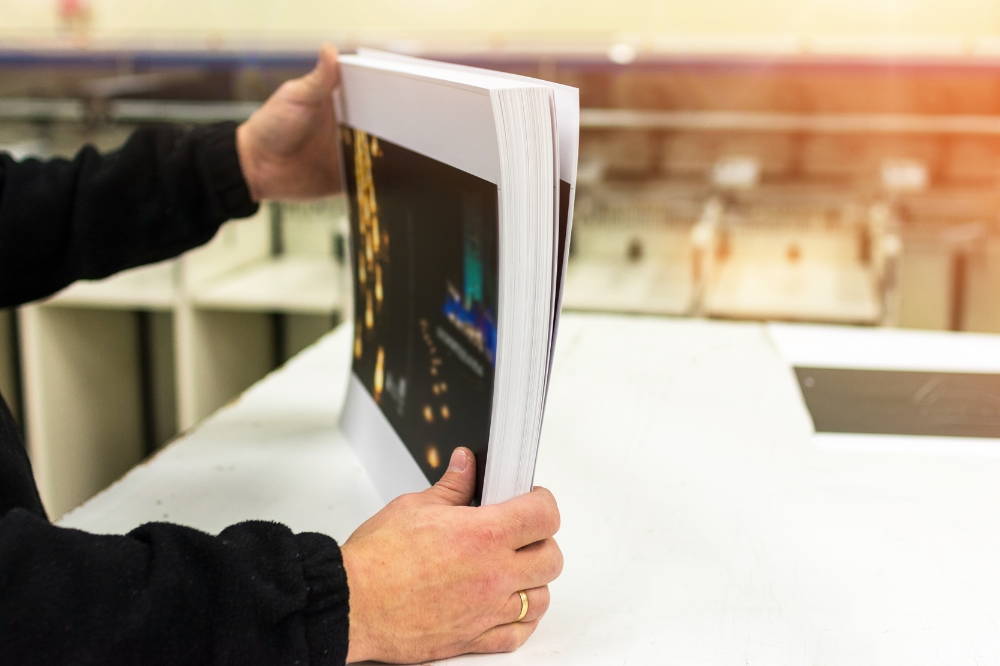
The Power of Print
In today’s digital world, it’s easy to overlook the importance of printed marketing materials. However, print still holds a crucial place in any comprehensive marketing strategy. From branded notepads to brochures, flyers, posters, and door hangers, printed materials offer tangible benefits that digital mediums simply can’t match. Here’s why printed marketing materials should be an essential part of your marketing plan.
Tangibility and Staying Power
Printed materials are physical objects that customers can hold, keep, and refer back to whenever needed. Unlike digital ads that can be easily forgotten or deleted, a well-designed brochure or flyer can sit on a desk, be pinned to a bulletin board, or handed to someone else. This staying power means that your message remains in front of your audience longer, increasing the chances of engagement.
Enhanced Credibility and Trust
Printed marketing materials often carry a sense of credibility and professionalism. There’s something about holding a high-quality business card or brochure that makes a brand feel more established and trustworthy. According to studies, 82% of consumers trust print ads more than any other advertising channel (MarketingSherpa). This trust translates into higher brand recall and loyalty, making print an invaluable tool for businesses aiming to build long-term relationships with their customers.
Versatility and Customization
Printed materials come in a wide range of formats, each serving different marketing purposes:
- Branded Notepads: Great for giveaways at events, notepads are useful items that keep your brand in front of customers daily.
- Brochures and Flyers: These are perfect for providing detailed information about your products or services, whether in a store, at a trade show, or through direct mail.
- Posters: Eye-catching and bold, posters are ideal for promoting events or special offers in high-traffic areas.
- Door Hangers: A unique way to target specific neighborhoods, door hangers are effective for local marketing campaigns, especially in service industries.
Each of these materials can be customized to match your brand’s identity, ensuring consistency across all touchpoints. This versatility allows businesses to craft targeted messages for different audiences and purposes.
Engaging Multiple Senses
One of the unique advantages of print is its ability to engage multiple senses. The texture of the paper, the quality of the print, and even the smell of the ink contribute to a sensory experience that digital marketing can’t replicate. This sensory engagement can create a stronger emotional connection with your audience, making your brand more memorable.
Complements Digital Marketing
Printed materials don’t just stand alone—they complement and enhance your digital marketing efforts. For instance, including a QR code on a flyer can drive traffic to your website or social media pages, creating a seamless bridge between your print and digital strategies. Additionally, studies have shown that combining print with digital campaigns can increase the effectiveness of online ads by up to 400%(OfficeDasher).
Cost-Effective and High ROI
Despite misconceptions, print marketing can be highly cost-effective, especially when considering its return on investment (ROI). For example, direct mail campaigns often yield higher response rates compared to digital channels, sometimes up to 9% compared to 1% or less for email. The lasting impact and higher engagement rates make print a smart investment for businesses looking to maximize their marketing budgets.
Conclusion
Printed marketing materials are far from obsolete; they are a powerful complement to digital marketing efforts and remain a critical component of a successful marketing strategy. Whether it’s the tangibility and credibility they bring, the sensory engagement they offer, or their ability to effectively target and reach your audience, print has proven its enduring value. By integrating printed materials like brochures, flyers, posters, and more into your marketing plan, you can create a well-rounded, impactful campaign that resonates with your audience both online and offline.
Ready to incorporate print into your marketing strategy? Let’s talk about how we can help you create high-quality, memorable printed materials that will leave a lasting impression on your customers.


